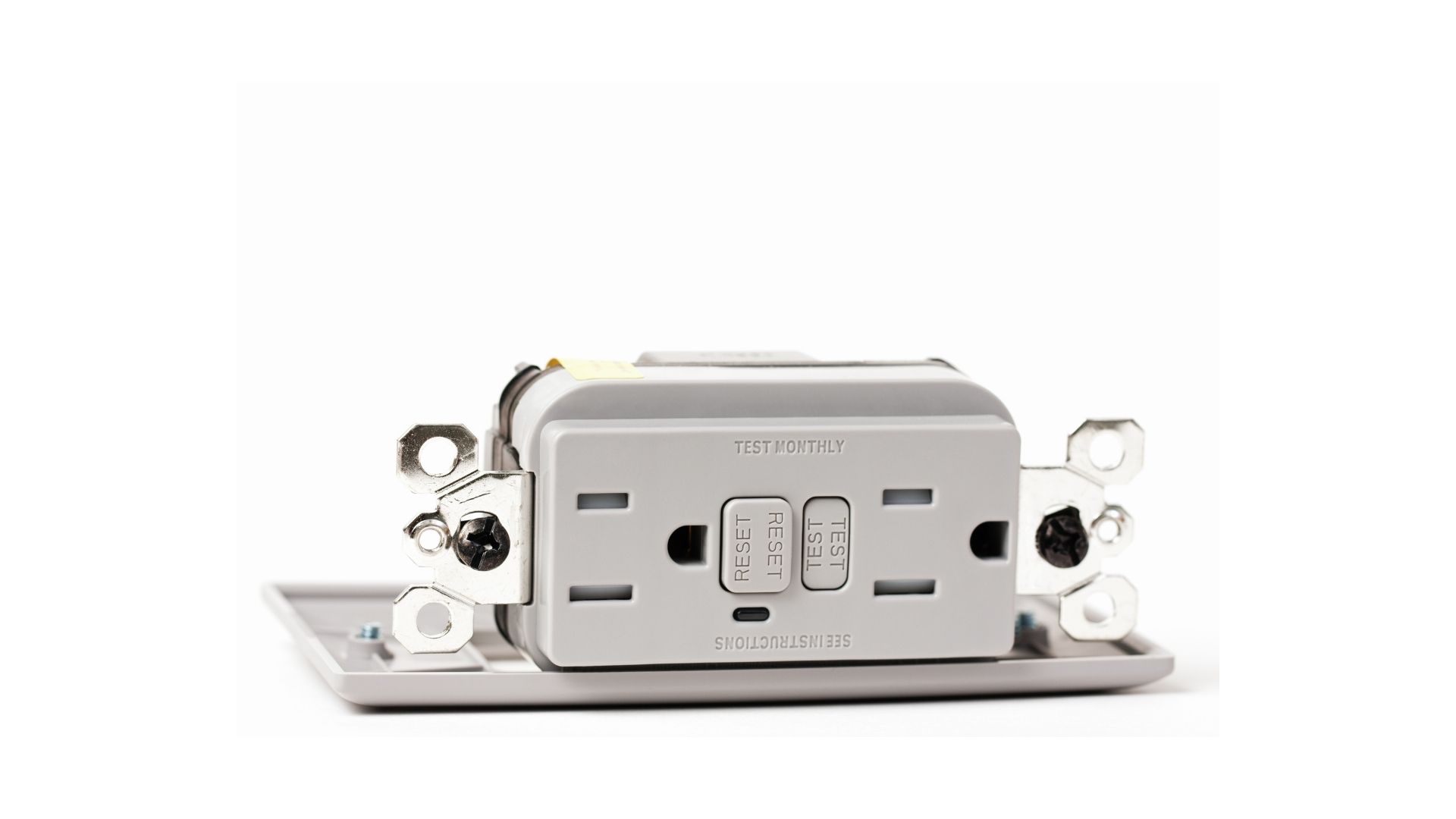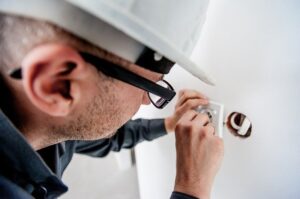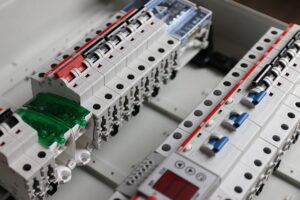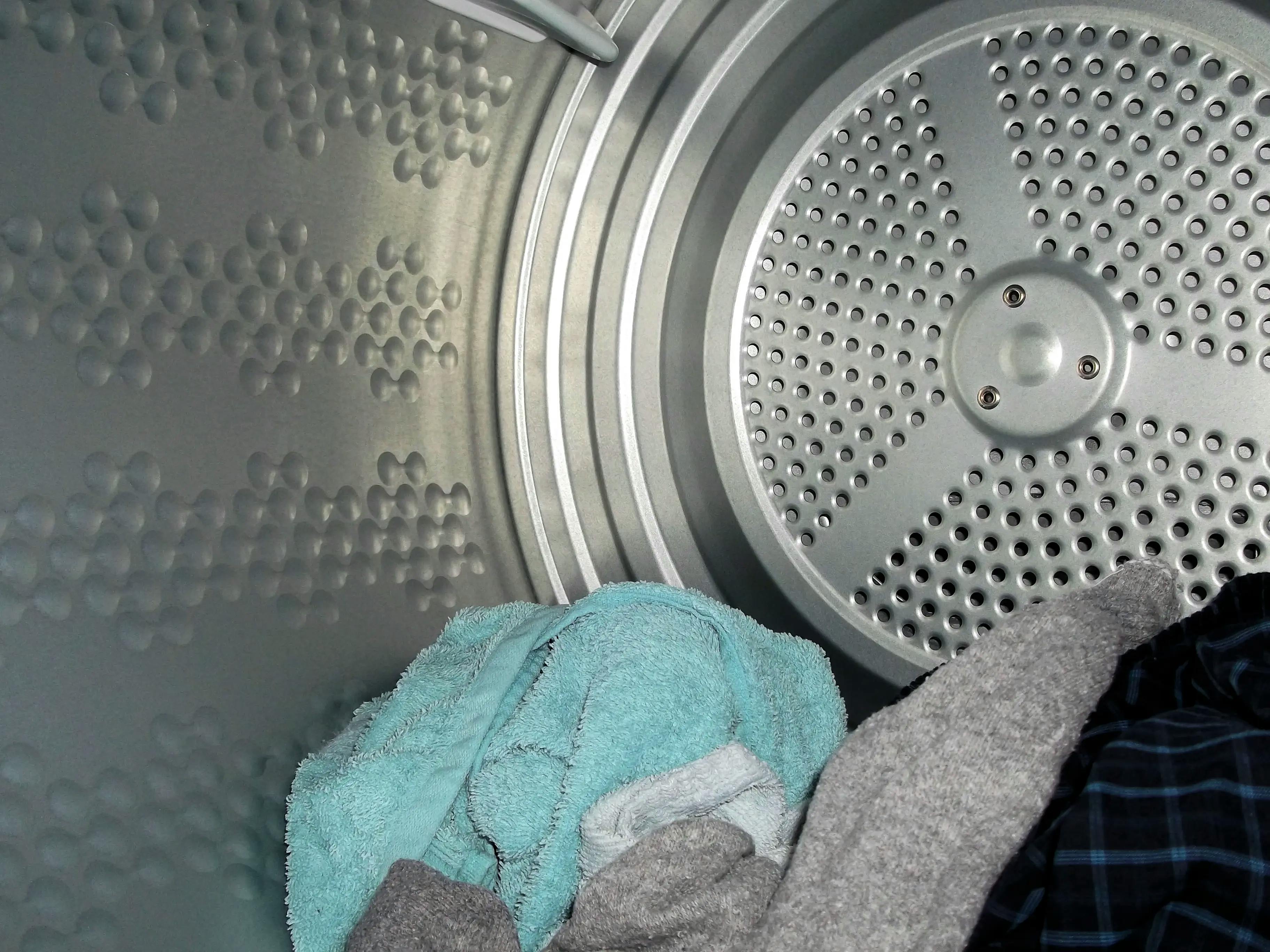

GFCI Class A, B, C, D, E Meaning (With Its Trip Level)

It is not that difficult to understand why the NEC encourages consumers to use GFCIs. According to the Home Electrical Fires, electrical issues cause over 50,000 fires annually, killing hundreds of people and injuring thousands. Therefore, you already understand the important role GFCIs play. But what about the class? Does the GFCI class matter?
GFCI Class Meaning
According to NEC 210.8(B), class C, D, and E GFCIs respond to currents that exceed 20mA while their class A counterparts react to current leaks of 5mA or more.
This tells you everything you need to know about GFCI classes.
The class reveals the amount of electricity that has to leak for a particular GFCI device to respond.
An experienced engineer will identify the type of GFCI you need if you tell them the class. If you don’t know the class, they will scrutinize the needs of your applications and projects to figure out the appropriate GFCI class for your situation.
As you can see, the GFCI class is important. People don’t consider it because local retailers rarely mention it. They typically sell the same types of GFCIs to homeowners. This is because most residential areas use a similar GFCI receptacle.
As such, homeowners and their retailers do not have to consider the class of a GFCI. But if you have a complex project in an industrial setting, your contractor will introduce the GFCI class to the discussion.
Advantage Of Using Different Class GFCI
- Class A responds to a ground fault of 6mA or more
- Class B responds to a ground fault of 20mA or more
- Class C is found in systems where the conductors are less than 300VAC
- Class D is found in systems where at least one conductor is 300VAC to ground or more.
- Class E GFCIs are similar to class D. The protected equipment has conventional equipment grounding.
Even with those descriptions, the advantage of knowing these classes won’t make sense to you if you don’t understand how GFCIs work.
These devices prevent electrocution by detecting the difference between the ingoing and outgoing current.
Electricity leaves the panel through the hot conductor and returns via the neutral line. The current between these two wires should balance. But if a malfunction occurs and the electricity escapes the wires to flow through water, the human body, or any other conductor, the GFCI will detect this development because the volume of current returning via the neutral line will change.
It will reduce, which is a bad thing. The GFCI will cut the power immediately to protect the user and their equipment. But that raises a question. How big can the difference be between the incoming and outgoing current for the GFCI to trip?
It only takes a current difference of 5mA for the GFCI to take action. On the surface, this is a good thing. The GFCI will shut the power in the outlet off before the current leak can kill you.
But that is only acceptable where ordinary household items are concerned. What if you have powerful devices in commercial settings that use more significant volumes of current?
Machines in factories produce larger current leaks even though a ground fault hasn’t occurred. If you have a conventional GFCI that trips in response to a 6mA difference, it will become a nuisance because factory machines will trigger the device incessantly.
People started looking for GFCIs that could accommodate high voltage applications decades ago. UL introduced tests to determine the viability of higher voltage GFCIs, but none of the available models could meet the organization’s requirements.
That is no longer the case. The market has plenty of class C, D, and E GFCIs that consumers can apply to 600V applications. They trip at a threshold of 20mA, which is low enough to protect workers from fatal shocks but not so low that it attracts nuisance tripping.
You don’t have to limit your selection to GFCIs that trip at 20mA. You can buy models with adjustable thresholds, especially if your objective is to protect devices instead of people. However, organizations like Underwriters Laboratories will not call those devices GFCIs.
Instead, they will use terms like ‘ Equipment Ground Fault Protection Devices .’ What does this mean? The class allows you to identify the right GFCI for every application.
The NEC is quite clear on this issue. Homeowners do not realize that the NEC expects them to use class A GFCIs in residential areas. People ignore the class because they don’t know its importance, which makes sense.
If you own a home, class A GFCIs are all that matters to you. You don’t have to concern yourself with class B GFCIs unless you want to apply the technology to swimming pool light fixtures.
But if you want to introduce GFCI technology to higher voltage applications, you must learn everything there is to know about GFCI classes. This is the only way to protect yourself and your equipment with the appropriate GFCI.
Different Classes of GFCI and Its Features
Class a gfci.
Class A GFCIs respond when the current leak exceeds 5mA. But They don’t respond if the current leak is 4mA or less. This prevents nuisance tripping.
Class A GFCIs prevent electrical shocks resulting from malfunctions and defective circuits. The manufacturer will label the GFCI accordingly.
How Does GFCI Of Class A Work?
The GFCI trips when it detects a current leak ranging from 4mA to 6mA. You will find them in outlets in kitchens, bathrooms, and other places that expose electrical equipment to water.
Class A GFCI Trip Level
The NEC puts GFCIs in the class A category if they trip when the current leakage is 4mA to 6mA. They expect consumers to add class A GFCIs to 15 and 20A receptacles in unfinished basements , kitchens , bathrooms, garages , and exterior locations.
Class B GFCI
Class B GFCI trips when the electrical imbalance exceeds 20mA.
You cannot categorize every device with a trip current of over 20mA under the class B banner. S c hneider Electric has mentioned that they have devices that trip at 30mA.
And yet, those devices do not meet class B requirements. This should encourage you to apply caution while buying GFCIs. If you cannot find the documentation explaining the GFCI’s class, don’t apply that GFCI until you consult an expert.
How Does GFCI of Class B Work?
A class B GFCI works just like any other GFCI. It protects equipment by tripping after detecting an imbalance in the circuit. But unlike class A GFCIs that trip when the ground fault current is between 4 and 6mA, class B GFCIs will only respond to an imbalance of more than 20mA.
Class B GFCI Trip level
Class B GFCIs trip when the ground fault current exceeds 20mA.
You were more likely to see class B GFCIs before the 1965 NEC was adopted. Consumers added them to underwater light fixtures in swimming pools. Class A GFCIs were not a viable option because of their sensitivity. They would trip incessantly.
Class A VS Class B GFCI
- You find class A GFCIs in residential settings because they have a trip current of 4 to 6mA. They accommodate home appliances and devices with reasonable watt ratings.
- You find class B GFCIs in settings with ground fault currents that exceed 20mA. A class A GFCI would repeatedly trip if you added the device to an application that needs class B GFCIs.
Class C GFCI
Class C trip when detecting an imbalance of 15 to 20mA. This is not the only requirement for a class C GFCI. Additionally, the circuit in question shouldn’t have any conductors that exceed 300V to the ground. The line-to-line voltage should be no more than 480V. Make sure the equipment in question has reliable grounding .
That 15 – 20mA range is above the ‘ let go threshold .’ Therefore, decent grounding is vital in case an unexpected malfunction occurs.
Many people place class B, C, D, and E GFCIs in the same category because they all have higher trip thresholds than class A GFCIs.
But you have to remember that these GFCIs have significant differences that affect how they are deployed.
With class D GFCIs, you can have at least one conductor on a circuit with more than 300V to the ground. You don’t want to use class C GFCIs on 600V systems.
Class D technology is the best option. Although, you also require reliable grounding.
Class E GFCIs offer highspeed tripping . You don’t need the same oversized ground people associate with class D GFCIs.
The importance of class B, C, D, and E GFCIs cannot be overstated. Class A GFCI trip currents are not fatal. You may not even notice them. But currents as high as 10mA can affect the muscles, causing involuntary contractions.
Higher currents will affect the victim’s breathing. Don’t be surprised if ventricular fibrillation occurs, stopping the heart and killing consumers that cannot be defibrillated quickly enough. The last thing you want is to match a GFCI class to the wrong application.
Related post:
- Will A GFCI Outlet Work Without A Neutral? (Find It Now!)
- Washer Tripping GFCI (It’s Cause & Troubleshooting Tips)
- GFCI Light(Red, Green, Yellow, Orange, No Light) Meaning
- Open Ground GFCI Meaning – You Must Know
Stellar Jackson
One thought on “ GFCI Class A, B, C, D, E Meaning (With Its Trip Level) ”
Hi Seems you have been working intensively with GFCI. However the standards or the way to measure is in low frequency range (50 -300Hz – as i recall it). What about harmonics e.g from inverters (speed controlled compressors or pumps) where typically you see harmonics related to the switching frequency. Many GFCI models in the market today seems not to take care and will trip e.g at 3Khz by low current while characteristic of tripping curve is very non linear
Leave a Reply Cancel reply
Your email address will not be published. Required fields are marked *
Save my name and email in this browser for the next time I comment.
Recent Posts
Can You Run 120V And 480V In The Same Conduit? Is it Safe?
Yes, you can run 120V and 480V in the same conduit, and your local code will most likely permit the practice. Some people disagree. They think the NEC and other electric codes are designed to set the...
Can I Use 6/3 Wire For Hot Tub?
You can use 6/3 wire for a hot tub for 55 amps or less. I recommend 4AWG for 60A hot tubs to be on the safe side. Ensure proper grounding and consult an expert to match the wire gauge with your hot...
Username or Email Address
Remember Me

Ground Fault Circuit Interrupters (GFCIs):
[wpfa icon=”play-circle”] video

What is a GFCI
A ground fault circuit interrupter (GFCI) can help prevent electrocution. If a person’s body starts to receive a shock, the GFCI senses this and cuts off the power before he/she can get injured.
GFCIs are generally installed where electrical circuits may accidentally come into contact with water. They are most often found in kitchens, bath and laundry rooms, or even out-of-doors or in the garage where electric power tools might be used.
What is a ground fault?
According to the National Electrical Code, a “ground fault” is a conducting connection (whether intentional or accidental) between any electric conductor and any conducting material that is grounded or that may become grounded. Electricity always wants to find a path to the ground. In a ground fault, electricity has found a path to ground, but it is a path the electricity was never intended to be on, such as through a person’s body.
Because of this potential for shock, GFCI protection is used to protect human life.
How does a GFCI work?
The GFCI will “sense” the difference in the amount of electricity flowing into the circuit to that flowing out, even in amounts of current as small as 4 or 5 milliamps. The GFCI reacts quickly (less than one-tenth of a second) to trip or shut off the circuit.
What are the types of GFCIs?
There are three types of GFCIs. The most often used “receptacle-type” GFCI, similar to a common wall outlet, is the type with which most consumers are familiar. Additionally, circuit breaker GFCIs are often used as replacements for standard circuit breakers and provide GFCI protection to all receptacles on that individual circuit. Temporary or portable GFCIs are frequently used in construction and in outdoor settings with electric tools, mowers, trimmers, and similar devices. They should not be used as a permanent alternative to a regular GFCI. Temporary GFCIs should be tested prior to every use.
How should GFCIs be tested?
Many consumers don’t check their GFCIs to verify they are working. GFCIs are electronic devices that can be damaged or wear out. The electrical receptacle in a GFCI may continue to function, even if the GFCI circuit no longer works. If this is the case, have a qualified electrician replace it as soon as possible.
GFCIs should be tested monthly to ensure they are in working condition. Whether you have a receptacle or circuit breaker GFCI, pushing the TEST button should turn off the power to the circuit. For the receptacle-type GFCI, pushing the TEST button should cause the RESET button to pop up. (Remember to push the RESET button to re-establish power and protection.) For the circuit breaker-type GFCI, pushing the TEST button should cause the handle to move to the tripped position. (Remember to reset the handle to re-establish power and protection.)
When should you test GFCIs?
GFCIs should be checked monthly to determine if they are operating properly. A portable GFCI should be used out-of-doors with various electrical power tools (i.e., drills, mowers, trimmers) and should be tested before each use!
Where should GFCIs be used?
It is recommended that GFCIs be installed in areas where appliances and power tools are used in close proximity to water. Tap water or wet objects are able to conduct electricity very easily and can connect your body to a ground potential, thus increasing your chances of receiving a shock from a ground fault. Appliances that have built-in GFCI protection, as now required for hair dryers, may not need additional GFCI protection, but there are still many appliances not equipped with GFCI protection.
What is nuisance tripping of a GFCI?
It takes only 5 mA (0.005 A) of current leakage from the hot wire to the ground to cause a GFCI to trip. A small amount of leakage current may be difficult to avoid in some normal circuits. Hand-held power tools do not cause a tripping problem if the tool is maintained in good condition. Some stationary motors, such as a bathroom vent fan or fluorescent lighting fixtures, may produce enough leakage to cause nuisance tripping. Another problem may be a long circuit with many splices. If possible, keep GFCI circuits less than 100 feet long. To avoid nuisance tripping, a GFCI should not supply:
- Circuits longer than 100 feet
- Fluorescent or other types of electric-discharge lighting fixtures
- Permanently installed electric motors
How does a GFCI differ from an AFCI?
Arc fault circuit interrupters (AFCIs) are safety devices for homes that provide enhanced protection from fires caused by unsafe home wiring conditions.
AFCIs should not be confused with GFCIs. While both AFCIs and GFCIs are important safety devices, they have different functions. AFCIs are intended to address fire hazards; GFCIs address shock hazards.
- Member Center

Understanding GFCI Nuisances
January 24, 2019
Since the expansion of the 2017 National Electrical Code (NEC) ground fault circuit interrupter (GFCI) requirements to include single-phase receptacles up to 50A and three-phase receptacles up to 100A, we’ve seen a trend of increased GFCI nuisance tripping. While these trips can be frustrating, it’s important to not create a code violation or put personnel at risk by removing GFCI protection. Often, a tripping GFCI device may be operating properly; it’s possible there is an equipment or wiring issue that needs to be addressed.
At Henderson Engineers, we’ve compiled the following information to help our clients understand why they may be experiencing an issue and suggestions on how to address it.
What is GFCI protection?
GFCI devices have been credited with saving numerous lives since their introduction to the NEC in 1971. This protection can be achieved via a GFCI circuit breaker or a GFCI receptacle. These devices reduce electrocution risks by measuring the electrical current between the phase conductor and the neutral return. If the return current differs by more than 4 to 6 mA, a dangerous amount of current is flowing somewhere it shouldn’t be – so the device shuts off. Per the 2017 NEC, GFCI protection is required in bathrooms, kitchens, rooftops, outdoors, within 6’ of a sink, and select other areas.
The NEC commentary explains that they expanded GFCI requirements to include higher voltages and current ratings because equipment connected to those receptacles present the same shock hazards as those of lower voltages and current ratings. Unfortunately, this expansion of the GFCI requirements has led to more nuisance tripping and owner’s asking, “Why is my GFCI not working?”
Common Causes of GFCI Trips
1. There are too many appliances being protected by the GFCI.
Sometimes tripping occurs when a GFCI circuit breaker is protecting multiple downstream receptacles. If several appliances are connected to the GFCI device, the cumulative effect of the appliance leakage currents may trip the GFCI. To ensure proper operation, minimize the number of appliances protected by the GFCI. Depending on the circuit length from the GFCI sensing device, it may be necessary to limit the number of appliances being protected to one or two.
2. The circuit is too long for the equipment being protected by the GFCI.
This is common in GFCI circuit breakers with circuit lengths over 150’. Capacitive leakages due to the wire length of the circuitry may exceed the threshold of the GFCI. (The actual length limitations vary depending on wire type and size.) To prevent this issue, place the GFCI device close to the equipment it will be protecting – this may mean using a GFCI receptacle or blank face GFCI device near a normal receptacle.
3. The GFCI was improperly wired by an electrician.
Have the installation checked to see if the GFCI receptacle and related circuitry are installed correctly. Verify the neutral is dedicated and connected to the correct circuit, etc. While testing of GFCI devices is not generally included in the basic scope of commissioning services, having a trusted third-party electrician or commissioning agent provide independent verification of proper installation may be necessary.
4. The area is too wet.
If nuisance tripping is occurring in areas near dishwashing, mop sink, janitorial, ice machines, showers, walk-in coolers, exterior locations, roofs, and other areas with a lot of condensation, then too much moisture may be the cause. Check to see if there are any environmental or operational changes that can be made to reduce moisture near the appliance and receptacle. Installing a weatherproof cover plate at the receptacle may be helpful.
5. An appliance may have manufacturing defects.
It’s possible an appliance may be leaking too much current to ground. Appliances are allowed a certain amount of leakage current per their UL listings; acceptable maximums may be as high as .75mA per appliance. Unfortunately, some equipment may not be built to the same standards as the prototype that passed testing. Now that more receptacles are required to have GFCI protection, equipment issues may be coming to light. If you have faulty equipment, contact the equipment supplier/manufacturer for repair or replacement.
6. The GFCI device may be defective.
These devices don’t last forever, and some are defective even when new. UL 943 covers Class A GFCI devices. GFCI breakers and receptacles should be replaced in accordance with manufacturer’s recommendations. Best practice is to test GFCIs monthly and replace them every 5 years.
Best Practices
GFCI devices trip for several reasons. The following best practices can help confirm proper operation and reduce nuisance tripping.
- Minimize the number of appliances protected by each GFCI.
- Minimize the circuit length from the GFCI circuit breaker to the receptacle – a maximum conductor length of 150’ is good rule of thumb.
- Verify GFCIs are installed per manufacturer’s recommendations and as required per code.
- Avoid excessive moisture around appliances and receptacle.
- Replace defective appliances.
- Replace defective or GFCI devices that are more than 5 years old.
- Maintain easy access to GFCI devices in case they need to be reset. (The 2017 NEC requires GFCI receptacles to be “Readily Accessible.” That means one must be able to reach the device quickly, without having to use ladders or climbing over obstacles, like large stationary kitchen equipment. GFCI breakers or blank face GFCI devices are sometimes needed to meet this requirement.)
Although they can be frustrating, it’s important to remember, GFCI devices have been proven to save lives and are required by code. Proper application and maintenance of these devices is essential for personnel safety and smooth business operations. If you’re experiencing GFCI issues our team can help, contact us for more information.

Electrical Technical Manager
Recent Insights

Deciphering the Principles of Computational Thinking
Part three of a four-part series of articles focused on computational thinking’s role in problem-solving, specifically as it pertains to the architecture, engineering, and construction industry.

Henderson’s Takeaways from 2024 BOMA International Medical Real Estate Conference
A wealth of knowledge and actionable insights to drive healthcare design and construction projects forward in a rapidly evolving landscape.
INDUSTRY INSIGHTS, DELIVERED.
Join our email list to get the latest design innovations, technical content, new projects, and research from Henderson’s experts delivered straight to your inbox.
- Grocery & Distribution
New Business Inquiries
- Name * First Last
- New Business Inquiry
Media Inquiries
- Media Inquiry
General Inquiries
- General Inquiry

No More Tripping: Tips for Troubleshooting GFCI Outlets
Ground Fault Circuit Interrupter (GFCI) outlets are a crucial safety feature in modern homes, protecting people from electrical shocks and electrocution.
However, you may encounter a situation where a GFCI trips for no apparent reason. It can be frustrating, especially if it occurs frequently.
In this article, we’ll explore why a GFCI may trip for no apparent reason and provide tips on how to troubleshoot and resolve the issue.
Table of Contents
What is a GFCI and How Does it Work?
Before we dive into why a GFCI may trip, it’s essential to understand what it is and how it works. A GFCI is an electrical safety device that monitors the flow of electricity in a circuit.
It protects people from electrical shock by immediately cutting off power to the circuit when it detects an imbalance in the electrical current, also known as a ground fault.
The GFCI measures the amount of current flowing out of the hot wire and compares it to the amount flowing back on the neutral wire.
If there is an imbalance of more than 5 milliamps, it trips and shuts off power to the circuit.
For more information about the difference between GFCI and CB read my article here.

Why Does a GFCI Trip for No Apparent Reason?
There are several reasons why a GFCI may trip for no apparent reason, including:
- Overloading : GFCI outlets are designed to handle a certain amount of current. If you plug in too many devices or appliances, it can overload the circuit and cause the GFCI to trip.
- Moisture : GFCI outlets are commonly found in areas of the home that are prone to moisture, such as bathrooms, kitchens, and outdoor areas. If water or moisture gets into the outlet, it can cause the GFCI to trip.
- Faulty Wiring: Faulty wiring can cause a GFCI to trip. Wiring issues can include loose connections, damaged wires, or faulty installation.
- Ground Faults: A ground fault is when the electrical current flows through an unintended path, such as through a person’s body. This can happen if a person touches a live wire or a faulty appliance. The GFCI will trip to prevent electrocution.
- Aging: Like any electrical component, GFCI outlets can wear out over time. If your GFCI outlet is old, it may be more likely to trip for no apparent reason.
Read my comprehensive article Why my circ uit breaker keeps tripping , for in-depth information.
How to Troubleshoot a GFCI That Keeps Tripping
If your GFCI outlet keeps tripping for no apparent reason, here are some steps you can take to troubleshoot the problem:
- Unplug all devices from the GFCI outlet: If the GFCI outlet stops tripping when you unplug everything from it, the problem may be an overload of the circuit.
- Dry out the outlet: If the GFCI outlet is located in a moist area, such as a bathroom or kitchen, make sure it is dry. You can use a hairdryer or fan to dry out the outlet.
- Check for loose connections: Make sure all wires are properly connected to the GFCI outlet. Loose connections can cause the outlet to trip.
- Test the GFCI outlet: You can test the GFCI outlet by pressing the “test” button. If the outlet does not trip when you press the test button, it may be working correctly. However, it’s still a good idea to replace it if it’s old or has been tripping frequently.
- Call an Electrician: If you’ve tried all the above steps and the GFCI outlet keeps tripping , it’s time to call an electrician. A professional can help you diagnose and repair any wiring or installation issues that may be causing the GFCI to trip.
Preventing GFCI Trips
While there are various reasons why a GFCI may trip for no apparent reason, there are some preventative measures you can take to reduce the chances of it happening:
- Do not overload the circuit : Avoid plugging too many devices into a single outlet or circuit. Spread out the load to other outlets in the room.
- Keep GFCI outlets dry: Moisture is a common cause of GFCI trips. Keep GFCI outlets dry, especially in areas such as bathrooms, kitchens, and outdoor areas.
- Regularly check wiring connections: Check for loose or damaged wiring and repair them promptly.
- Test GFCI outlets regularly: Test GFCI outlets regularly using the “test” button to ensure they are working correctly.
Here’s a table summarizing the reasons why a GFCI outlet might trip and some preventative measures you can take to avoid those issues:
By following these preventative measures, you can reduce the chances of your GFCI outlet tripping and keep your home safe.
- GFCI outlets are an essential safety feature in modern homes, but they can trip for no apparent reason.
- Overloading, moisture, faulty wiring, ground faults, and aging can cause a GFCI to trip. If your GFCI outlet keeps tripping, there are several troubleshooting steps you can take, including unplugging devices, drying the outlet, checking for loose connections, and testing the GFCI outlet.
- If the problem persists, it’s time to call an electrician. By taking preventative measures such as avoiding overloading circuits, keeping GFCI outlets dry, regularly checking wiring connections, and testing GFCI outlets, you can reduce the chances of GFCI trips and ensure the safety of your home and loved ones.
Install my Free Android App on Google Play :
Electrical Cables Most Common Tables
And, my Electrical Calculations App “”
Discover more great content by subscribing to My channel
Looking to stay ahead of the game in the world of electrical engineering? Subscribe to my YouTube channel and gain access to exclusive content you won’t find anywhere else!
The staff I recommend
(Amazon Affiliate Links to products I believe are high quality):
- Economy 120 Volt/60Hz AC Power Source – Step-Down Voltage & Frequency Converters 1800W
- UNI-T Digital Multimeter Tester UT139C
- 50-Amp Extension Cord for RV “100ft”
- Voltage Stabilizer 110/220v
- Hair Dryer “best selling “
- TOSHIBA EM131A5C-BS Countertop Microwave Ovens
Disclaimer : This contains affiliate links to Amazon products. I may earn a commission for purchases made through these links.
You Might Also Like
When breakers go bad: the top symptoms and solutions.

Breaker Keeps Tripping: Understanding the Common Causes and Solutions

What Is Overcurrent? (Causes, Effects, and Protection)
Shock and awe: the potential dangers of 240 volts, stay safe and connected: why grounding your panel is critical.

Common Causes of GFCI Outlets Keeps Tripping and How to Troubleshoot Them

Why Do My GFCI Outlets Keep Tripping?
Common causes of gfci outlets tripping, outlet keeps tripping after reset, outlet keeps tripping with nothing plugged in, outlet keeps tripping when i plug something in, outlet keeps tripping without load, how to troubleshoot gfci outlet tripping.
- Check for Ground Faults: Inspect the vicinity of the outlet for indications of moisture, like water leaks or dampness. Ground faults, which can cause GFCI tripping, can occur due to moisture. It's crucial to promptly address any water-related problems to prevent potential ground faults and ensure the safety of the electrical system.
- Inspect Wiring Connections: To prevent GFCI tripping, it is important to inspect the wiring connections within the outlet box. Check for any loose or damaged wires, as they can cause a GFCI to trip. Safely turn off the power to the outlet and carefully examine the connections, tightening any loose screws or terminals for proper installation and secure connections.
- Test GFCI Outlet Functionality: To ensure the functionality of a GFCI outlet, press the "Test" button to simulate a ground fault and check if it trips correctly. Afterward, press the "Reset" button to restore power. If the GFCI fails to trip during testing or doesn't reset properly, it indicates a potential fault, and the outlet should be replaced to maintain electrical safety.
- Identify Overloading Issues: It's important to be mindful of the current rating of GFCI outlets, usually 15 or 20 amps. If multiple appliances or devices connected to the outlet exceed this rating, it can cause tripping. Evaluate the number of devices connected simultaneously and redistribute the load accordingly to prevent overloading and subsequent GFCI trips.
- Examine Water Exposure: In areas prone to moisture, such as kitchens or bathrooms, it is crucial to protect GFCI outlets with waterproof covers. Water exposure from splashes or high humidity can lead to GFCI tripping. By installing appropriate waterproof covers, you can safeguard the outlet from moisture-related issues and ensure its proper functionality.
- Consult a Professional Electrician: If the above steps do not resolve the problem or if you are uncertain about handling electrical troubleshooting, it is wise to consult a professional electrician. They possess the expertise to conduct a comprehensive assessment of your electrical system and provide appropriate advice or repairs, ensuring safety and reliable operation.
Home Alliance: Your Go-To Electrical Repair Work

One of the great modern conveniences is having a dryer. Because we tend to see "basic" appliances as more of a necessity than a luxury, the majority of us don't...

In the pursuit of maintaining a healthy and comfortable living environment, one often underappreciated yet critical factor is indoor air quality (IAQ). The qual...

In the realm of food storage, the refrigerator plays a vital role in preserving freshness. However, not all foods are meant to find their home amidst the chilly...
- (317) 834-1922

Troubleshooting Guide: What to Do When Your GFCI Keeps Tripping
Ground Fault Circuit Interrupters (GFCIs) are crucial electrical safety devices that protect us from electrical shocks and potential hazards. However, it can be frustrating when a GFCI repeatedly trips, disrupting power to multiple outlets. Let’s explore the common causes behind GFCI tripping and provide a step-by-step troubleshooting guide to help you resolve the issue.
Role of a GFCI
To effectively troubleshoot a GFCI tripping issue, it’s essential to understand how it works. A GFCI monitors the electrical current flowing through a circuit. If it detects even a slight imbalance, such as current leakage due to a ground fault, it automatically shuts off the power to prevent electric shock.
Identify Potential Causes
There are several potential causes for GFCI tripping that you should be aware of. Here are a few of the most common causes you may encounter:
Ground Faults
The most common cause of GFCI tripping is a ground fault. This occurs when a hot wire encounters a ground wire or conductive material, creating a short circuit and causing the GFCI to trip.
Overloaded Circuits
GFCIs are designed to handle a specific amount of current. Overloading the circuit by plugging in multiple high-power devices simultaneously can cause the GFCI to trip.
Faulty Appliances or Wiring
If a specific appliance or wiring in the circuit has a fault, it can trigger the GFCI to trip. Identifying the faulty device is crucial to resolving the issue.
Resetting the GFCI
When the GFCI trips, the first step is to reset it. Locate the GFCI outlet or breaker and press the reset button. If it clicks and stays in place, the issue may have been a temporary fault. However, if it immediately trips again, proceed with the following steps:
1) Isolate the Problem
Unplug all devices from the GFCI-protected outlets.
2) Reset the GFCI
Gradually plug in one device at a time and reset the GFCI after each plug-in. If the GFCI trips after plugging in a specific device, that device may be faulty and needs further inspection or repair.
3) Check for Ground Faults
Inspect outlets, switches, and connections for damage, security, exposed wires in the circuit, and moisture in areas like bathrooms or outdoor outlets to prevent ground faults.
4) Address Overloaded Circuits
Identify outlets connected to the GFCI circuit and consider redistributing the load by connecting certain devices to non-GFCI outlets.
5) Seek Professional Help
If the issue persists or you are uncomfortable dealing with electrical troubleshooting, it’s best to contact a qualified electrician. They have the expertise to identify and resolve complex electrical problems safely.
Ready to Get Rid of GFCI Tripping?
GFCI tripping can be a nuisance, but understanding the causes and following a systematic troubleshooting approach can help you resolve the issue. By isolating the problem, checking for ground faults, addressing overloaded circuits , and seeking professional assistance when needed, you can ensure the safety and functionality of your electrical system.
Electrical work can be dangerous, so it’s crucial to prioritize your safety and consult a professional if you’re unsure about any aspect of the troubleshooting process. If you’re concerned about your GFCI tripping, contact Grounded Solutions to inspect it. We’re here to help you with any and all maintenance, installation, or general electrical needs!

Grounded Solutions is licensed, bonded, and insured. We’re headquartered in Indianapolis, but we service the entire state of Indiana and beyond.
- Bargersville
- Beech Grove
- Indianapolis
- Martinsville
- McCordsville
- Mooresville
- Noblesville
- Shelbyville
- Whiteland (And New Whiteland)

- 450 E Mahalasville Dr Martinsville, IN 46151
Need excavation, drainage or concrete work?

- Privacy Policy
- Terms of Use

IMAGES
VIDEO
COMMENTS
GFCI Trips: On GFCI-protected circuits, leakage current can cause unnecessary and intermittent tripping. When many pieces of equipment are operating on a circuit, the leakage current is cumulative and could cause a GFCI to trip randomly.
The adjustment can be set from 20 to 70% of the maximum breaker rating. In compliance with NEC® 230-95 (A), no trip point setting exceeds 1200 amps. The ground fault pickup is divided into three sections; .1s, .2s, and .4s. This feature adds a time delay of .1, .2, or .4 seconds to the breaker’s trip when a ground fault occurs.
You find class A GFCIs in residential settings because they have a trip current of 4 to 6mA. They accommodate home appliances and devices with reasonable watt ratings. You find class B GFCIs in settings with ground fault currents that exceed 20mA.
A GFCI circuit breaker monitors the imbalance of electrical current between the hot and neutral wires within a circuit. If it detects a leakage of current, indicating a ground fault or a short circuit, it quickly interrupts the circuit, cutting off the power supply.
A ground fault circuit interrupter (GFCI) can help prevent electrocution. If a person’s body starts to receive a shock, the GFCI senses this and cuts off the power before he/she can get injured. GFCIs are generally installed where electrical circuits may accidentally come into contact with water.
The GFCI section will trip if any current leaves the hot wire without returning on the neutral wire. The circuit breaker will trip if more current leaves the hot wire than its trip rating, such as 15 or 20A.
GFCI devices trip for several reasons. The following best practices can help confirm proper operation and reduce nuisance tripping. Minimize the number of appliances protected by each GFCI. Minimize the circuit length from the GFCI circuit breaker to the receptacle – a maximum conductor length of 150’ is good rule of thumb.
If your GFCI outlet keeps tripping, there are several troubleshooting steps you can take, including unplugging devices, drying the outlet, checking for loose connections, and testing the GFCI outlet. If the problem persists, it’s time to call an electrician.
GFCI outlets are designed to protect us from potential electrical hazards by detecting imbalances in the current flow and promptly interrupting the circuit. However, it can be quite frustrating when these outlets trip repeatedly, disrupting the power supply to our appliances.
If a specific appliance or wiring in the circuit has a fault, it can trigger the GFCI to trip. Identifying the faulty device is crucial to resolving the issue. Resetting the GFCI. When the GFCI trips, the first step is to reset it. Locate the GFCI outlet or breaker and press the reset button.